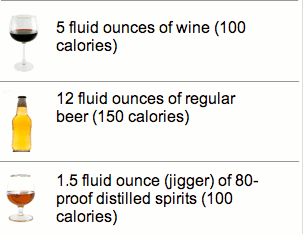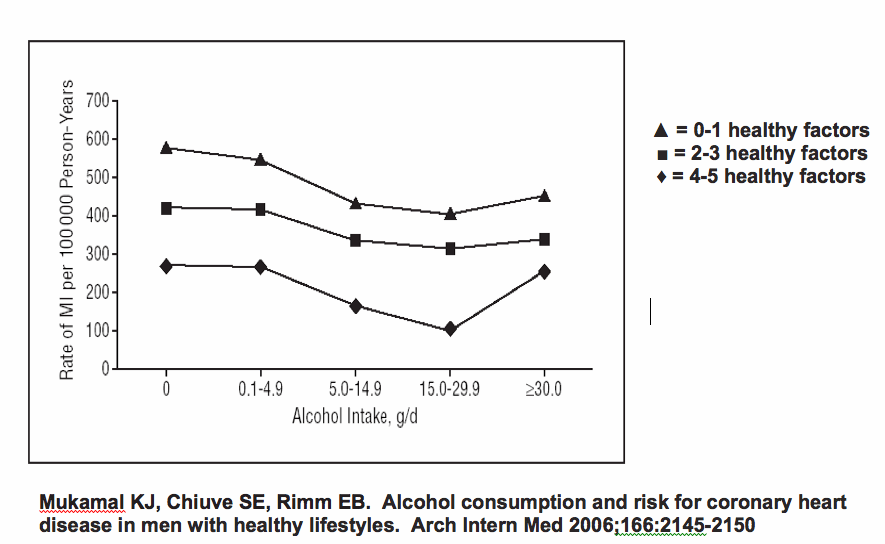
 |
|
|
US Government advice on sensible drinking for adults |
|
Women: A maximum of 1 drink per day and a maximum of
|
Men: A maximum of 2 drinks per day and a maximum of
|
RESPONSIBLE DRINKING GUIDELINES
How alcohol effects us depends on many factors such as our age, size, sex and health. How quickly we drink, and whether it is with food or on an empty stomach, also effects how quickly we absorb alcohol.
 |
The US Government looks at the risks and benefits of drinking alcohol and has been able to draw up guidelines for safe or low risk drinking with input from the Department of Agriculture and Department of Health & Human Services.
The US has one national set of dietary guidelines that includes advices on low-risk alcohol drinking, which are supported by health specialists, as well as many respected US organizations. 2020–2025 Dietary Guidelines for Americans are for healthy adults.
The guidelines state that ‘Adults of legal drinking age can choose not to drink, or to drink in moderation by limiting intake to 2 drinks or less in a day for men and 1 drink or less in a day for women, when alcohol is consumed. Drinking less is better for health than drinking more. There are some adults who should not drink
alcohol, such as women who are pregnant.

| A drink is defined as: |
 |
One drink is defined as 12 fluid ounces of regular beer (5% alcohol), 5 fluid ounces of wine (12% alcohol), or 1.5 fluid ounces of 80 proof (40% alcohol) distilled spirits. One drink contains 0.6 fluid ounces of alcohol.’'
It is important to remember that the alcoholic content of drinks will vary depending on the size of the pour. Also, home pours and cocktails may contain significantly more than these standard drink averages.
This level of intake appears to pose few health risks for most people and may be beneficial to health for some people, especially men over 40 and post menopausal women due to alcohol's cardiovascular protective effects. Generally, those adults who choose to drink should do so in a sensible manner as part of a healthy diet and lifestyle and preferably around mealtimes or with food.
| Why not try the UNIT CALCULATOR to see how many units your favourite drinks contain? Or download an app for your phone |
NIAAA drink calculator |
The consumption of small amounts of alcohol on a regular basis is more healthful than binge drinking large amounts of alcohol occasionally. Episodes of heavy intake (e.g. weekend bingeing alternating with weekday abstinence) is associated with health and safety risks. Saving up drinks should not be regarded as moderate or healthful, even if your total weekly alcohol intake is within the limits of moderation.
Why are there different guidelines for men and women?
Women's bodies are generally smaller and have less body water, so alcohol concentrations rise more quickly. Sorry ladies, but you can’t drink as much as men. That’s not a male conspiracy theory but a biological fact! Women have less body water than men so the concentration of alcohol in their blood stream is proportionally higher. So, if a woman weighing 60 kgs drinks a double vodka then a man of the same size will need to drink a triple in order to reach the same blood alcohol level. There is also some evidence that women break down alcohol slightly differently. The enzyme ADH breaks down alcohol in the liver and in the lining of the stomach; and women have less of it, so alcohol is broken down more slowly.
When not to drink
Official drinking guidelines are issued by governments and public health to advise on levels of alcohol consumption considered 'safe', 'responsible,' or 'low risk'. They do not apply to those under the legal drinking age or to pregnant women. Those on medication or with a history of illness should consult their general practitioner or specific advice. For religious or health reasons nearly half of adults around the world choose not to drink (45%). Responsible drinking means drinking enjoyably, sociably and moderately and includes not drinking at all in situations when the effects of alcohol will put your own or someone's safety or health at risk
The US Dietary Guidelines 2020-2025 identify some circumstances in which people should not drink alcohol, including "There are also some people who should not drink at all, such as if they
• plan to drive or operate machinery, or participate in activities that require skill, coordination, and alertness.
• take certain over-the-counter or prescription medications.
• have certain medical conditions.
• are recovering from alcohol use disorder or are
unable to control the amount they drink..
Women who are or who may be pregnant should not drink. Drinking during pregnancy, especially in the first few months of pregnancy, may result in negative behavioral or neurological consequences in the offspring. No safe level of alcohol consumption during pregnancy has been established.
Women who are breastfeeding should consult with their health care provider regarding alcohol consumption.
How much do Americans Drink?
Approximately 60 percent of adults report alcoholic beverage consumption in the past month. Of those, approximately 30 percent binge drink, sometimes
multiple times per month. During days when men andwomen consume alcohol, their consumption typically exceeds current guidance. Among adults, including
those who do not drink, alcoholic beverages contribute approximately 5 percent of calorie intake (3 to 4% of calories for women and 5 to 7% for men); this translates
into approximately 9 percent of calories among those who drink.
Potential Health Benefits of Moderate Alcohol Use
 When most people talk about the benefits of alcoholic beverages, they're usually referring to the pleasant, relaxed feeling and enhanced sociability that often result from drinking. When scientists and health professionals talk about the benefits of alcohol use, however, they are primarily referring to the fact that moderate drinking may reduce the risk of certain diseases, especially coronary heart disease. Among middle-aged and elderly people, moderate drinkers have lower mortality rates than abstainers - this is known as the 'J' shaped curve, or French paradox. In simple terms, alcohol stimulates the liver to produce 'good' HDL cholesterol and 'thins' the blood, helping prevent the build up of harmful clots or hardening of the arteries. In contrast, among younger adults alcohol consumption appears to provide little, if any, health benefit, and excess alcohol consumption among young adults is associated with a higher risk of traumatic injury and death. Consumers should enjoy drinking in moderation as one element of the 'healthy lifestyle' choices of regular exercise, not smoking, staying slim and a diet rich in fruit and vegetables and low in saturated fat. If you can manage this and enjoy drinking in moderation, your risk of chronic diseases reduce by more than 50%.
When most people talk about the benefits of alcoholic beverages, they're usually referring to the pleasant, relaxed feeling and enhanced sociability that often result from drinking. When scientists and health professionals talk about the benefits of alcohol use, however, they are primarily referring to the fact that moderate drinking may reduce the risk of certain diseases, especially coronary heart disease. Among middle-aged and elderly people, moderate drinkers have lower mortality rates than abstainers - this is known as the 'J' shaped curve, or French paradox. In simple terms, alcohol stimulates the liver to produce 'good' HDL cholesterol and 'thins' the blood, helping prevent the build up of harmful clots or hardening of the arteries. In contrast, among younger adults alcohol consumption appears to provide little, if any, health benefit, and excess alcohol consumption among young adults is associated with a higher risk of traumatic injury and death. Consumers should enjoy drinking in moderation as one element of the 'healthy lifestyle' choices of regular exercise, not smoking, staying slim and a diet rich in fruit and vegetables and low in saturated fat. If you can manage this and enjoy drinking in moderation, your risk of chronic diseases reduce by more than 50%.
Advice For Today
The US Dietary Guidelines 2020-25 state that
If alcohol is consumed, it should be consumed in moderation—up to one drink per day for women and up to two drinks per day for men—and only by adults of legal drinking age.
To help Americans move toward a healthy dietary pattern and minimize risks associated with drinking, adults of legal drinking age can choose not to drink or to drink in moderation by limiting intakes to 2 drinks or less in a day for men and 1 drink or less in a day for women, on days when alcohol is consumed. This is not intended as an average over several days, but rather the amount consumed on any single day. Binge drinking,3 defined as 5 or more drinks for the typical adult male or 4 or more drinks for the typical adult female in about 2 hours, should be avoided. Emerging evidence suggests that even drinking within the recommended limits may increase the overall risk of death from various causes, such as from several types of cancer and some forms of cardiovascular disease. Alcohol has been found to increase risk for cancer, and for some types of cancer, the risk increases even at low levels of alcohol consumption (less than 1 drink in a day). Caution, therefore, is recommended.
An estimated 95,000 people (approximately 68,000 men and 27,000 women) die from alcohol-related causes annually,15 making alcohol the third-leading preventable cause of death in the United States. The first is tobacco, and the second is poor diet and physical inactivity. The cost of excessive alcohol use in the United States reached $249 billion in 2010. 77% of these costs were due to binge drinking.
Key definitions for alcohol
What is moderate alcohol consumption? Moderate alcohol consumption is defined as up to 1 drink per day for women (14g) and up to 2 drinks per day for men.
What is heavy of high risk drinking? High-risk drinking is the consumption of 4 or more drinks on any day or 8 or more drinks per week for women and 5 or more drinks on any day or 15 or more drinks per week for men.
What is binge drinking? Binge drinking is the consumption within about 2 hours of 4 or more drinks for women and 5 or more drinks for men.
The bottom line message
Most people who drink do so moderately and responsibly as part of a healthy diet and lifestyle. Common sense tells us to drink responsibly at any time and especially if you are planning to drive or undertake other activities that require skills. Alcohol can be enjoyed as part of a healthy lifestyle in moderation, but it is not recommended that anyone begin drinking or drink more frequently on the basis of their health. Enjoyment of wine, beer and spirits has formed part of a pleasurable part of many traditions, cultures and some religions around the globe since civilization began.
Further sources of information
Information on sensible drinking guidelines worldwide
Foundation for Advancing Alcohol Responsibility responsibility.org
Rethinking Drinking rethinkingdrinking.niaaa.nih.gov/WhatCountsDrink/WhatsAstandardDrink.asp
Drinksmart drinksmart.com/
Dietary Guidelines for Americans dietaryguidelines.gov/resources/2020-2025-dietary-guidelines-online-materials
Executive Summary dietaryguidelines.gov/sites/default/files/2020-12/DGA_2020-2025_ExecutiveSummary_English.pdf
National Institute on Alcohol Abuse and Alcoholism Health and Social Issues Research Information niaaa.nih.gov/research
Other Public Health Resources:
National Library of Medicine: www.nlm.nih.gov/
American Heart Association: www.heart.org
American Cancer Society: www.cancer.org
American Academy of Family Physicians: www.aafp.org/
American Medical Association: www.ama-assn.org/
American Diabetes Association: www.diabetes.org/home.jsp
American Stroke Association: www.stroke.org/

